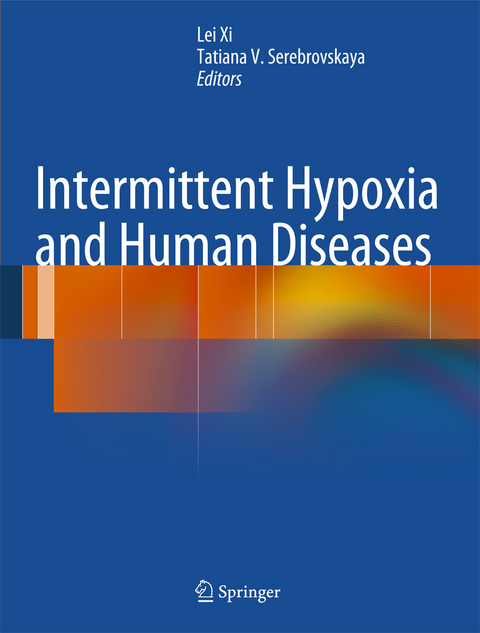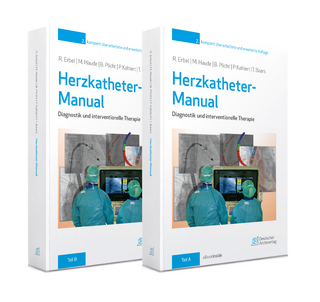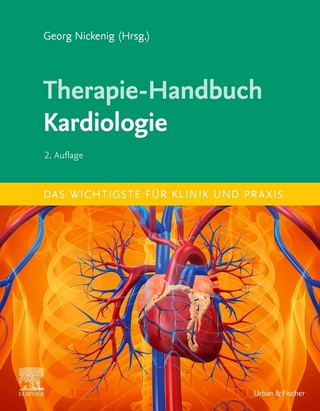
Intermittent Hypoxia and Human Diseases
Springer London Ltd (Verlag)
978-1-4471-6022-9 (ISBN)
This is a comprehensive monograph for clinicians, research scientists, academic faculty, postgraduate and medical students, and allied health professionals who are interested in enhancing their up-to-date knowledge of intermittent hypoxia research and its translational applications in preventing and treating major human diseases.
1.Sleep Disordered Breathing and Cardiac Arrhythmias.- 2.Effects of Chronic Intermittent Hypoxia on Cardiac Rhythm Transcriptomic Networks.- 3.Intermittent Hypoxia and Atherosclerosis.- 4.Protective Effects of Chronic Intermittent Hypoxia Against Myocardial Ischemia/Reperfusion Injury.- 5.Role of Mitochondrial Permeability Transition Pore in Intermittent Hypoxia-Induced Cardiac and Neuronal Protection.- 6.Intermittent Hypoxia Alters the Function of Cardiovascular Neurons and Reflex Pathways in the Brainstem.- 7.Effect of Intermittent Hypoxia on Breathing Stability in Individuals with Sleep Apnea.- 8.Activation of Inflammatory Circulating Factors by Intermittent Hypoxia in Sleep Apnea Syndrome.- 9.Beneficial Effects of Intermittent Normobaric Hypoxia Training on Respiratory Function in Patients with Chronic Pulmonary Diseases.- 10. Effects of Intermittent Hypoxic Training on Exercise Tolerance in Patients with Chronic Obstructive Pulmonary Disease.- 11.Intermittent Hypoxia inTreatment of Bronchial Asthma in Childhood.- 12.Intermittent Hypoxia and Experimental Parkinson’s Disease.- 13.Protective Effects of Adaptation to Hypoxia in Experimental Alzheimer’s Disease.- 14.Neuroprotective Mechanisms of Intermittent Hypoxia: An In Vitro Study.- 15.Intermittent Hypoxia Training to Enhance Endurance in Elite Swimmers.- 16. Adaptation to Intermittent Hypoxia/Hyperoxia Enhances Efficiency of Exercise Training.- 17.Hypobaric Interval Hypoxia as a Non-Medication Method of Improving the Functional State of Aerospace Pilots and Astronauts.- 18. Intermittent Hypoxia Remedies Male Sub-fertility.- 19.Anticancer Effects of Intermittent Hypoxia in Acute Myeloid Leukemia.- 20.Energotropic Effects of Intermittent Hypoxia: Role of Succinate-Dependent Signaling.- 21.Intermittent Hypoxia and Health: from Evolutionary Aspects to Mitochondrial Rejuvenation.- 22.Benefits and Risks of Different Regimen of Intermittent Hypoxic Training.- 23.Individualized Intermittent Hypoxia Training:Principles and Practices.- 24.Hypoxicators: Review of the Operating Principles and Constructions.- 25.Method of Combined Intermittent Hypoxia and Surface Muscle Electrostimulation for Enhancing Peripheral Stem Cells in Humans.
Intermittent Hypoxia and Atherosclerosis.- 4.Protective Effects of Chronic Intermittent Hypoxia Against Myocardial Ischemia/Reperfusion Injury.- 5.Role of Mitochondrial Permeability Transition Pore in Intermittent Hypoxia-Induced Cardiac and Neuronal Protection.- 6.Intermittent Hypoxia Alters the Function of Cardiovascular Neurons and Reflex Pathways in the Brainstem.- 7.Effect of Intermittent Hypoxia on Breathing Stability in Individuals with Sleep Apnea.- 8.Activation of Inflammatory Circulating Factors by Intermittent Hypoxia in Sleep Apnea Syndrome.- 9.Beneficial Effects of Intermittent Normobaric Hypoxia Training on Respiratory Function in Patients with Chronic Pulmonary Diseases.- 10. Effects of Intermittent Hypoxic Training on Exercise Tolerancein Patients with Chronic Obstructive Pulmonary Disease.- 11.Intermittent Hypoxia in Treatment of Bronchial Asthma in Childhood.- 12.Intermittent Hypoxia and Experimental Parkinson’s Disease.- 13.Protective Effects of Adaptation to Hypoxia in Experimental Alzheimer’s Disease.- 14.Neuroprotective Mechanisms of Intermittent Hypoxia: An In Vitro Study.- 15.Intermittent Hypoxia Training to Enhance Endurance in Elite Swimmers.- 16. Adaptation to Intermittent Hypoxia/Hyperoxia Enhances Efficiency of Exercise Training.- 17.Hypobaric Interval Hypoxia as a Non-Medication Method of Improving the Functional State of Aerospace Pilots and Astronauts.- 18. Intermittent Hypoxia Remedies Male Sub-fertility.- 19.Anticancer Effects of Intermittent Hypoxia in Acute Myeloid Leukemia.- 20.Energotropic Effects of Intermittent Hypoxia: Role of Succinate-Dependent Signaling.- 21.Intermittent Hypoxia and Health: from Evolutionary Aspects to Mitochondrial Rejuvenation.- 22.Benefits and Risks of Different Regimen of Intermittent Hypoxic Training.- 23.Individualized Intermittent Hypoxia Training: Principles and Practices.- 24.Hypoxicators: Review of the Operating Principles and Constructions.- 25.Method of Combined Intermittent Hypoxia and Surface Muscle Electrostimulation for Enhancing Peripheral Stem Cells in Humans.
| Zusatzinfo | XII, 316 p. |
|---|---|
| Verlagsort | England |
| Sprache | englisch |
| Maße | 210 x 279 mm |
| Themenwelt | Medizinische Fachgebiete ► Innere Medizin ► Kardiologie / Angiologie |
| Medizinische Fachgebiete ► Innere Medizin ► Pneumologie | |
| Studium ► 2. Studienabschnitt (Klinik) ► Pathologie | |
| Schlagworte | Cardiology • Human Diseases • Intermittent Hypoxia • Pathology |
| ISBN-10 | 1-4471-6022-3 / 1447160223 |
| ISBN-13 | 978-1-4471-6022-9 / 9781447160229 |
| Zustand | Neuware |
| Haben Sie eine Frage zum Produkt? |
aus dem Bereich


